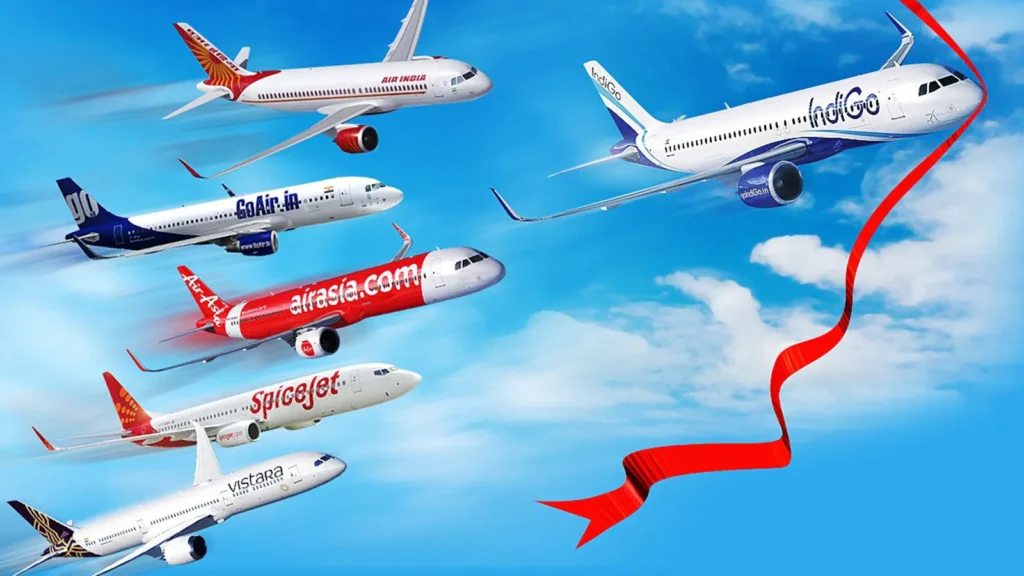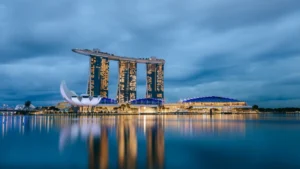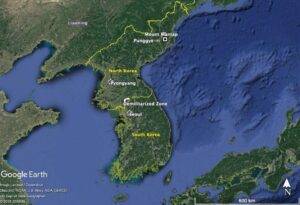Ah, the skies! They promise so much, don’t they? A swift journey, comfort, a way to escape the grind of long train rides or endless car journeys. But for many of us, especially here in India, that promise often crashes and burns, leaving us wondering why we even bothered. It seems our airlines are, well, taking us for a ride, and not the pleasant kind. We’re talking about a situation where sky-high prices meet ground-level services, and honestly, it’s a bit of a head-scratcher. What’s really going on with the Indian aviation sector? Let’s dive in and see if we can unpack this puzzle.
Soaring Prices, Sinking Standards: The Realities of Air Travel in India
It’s a peculiar thing, isn’t it? On the one hand, India’s aviation market is booming, ranking as the third largest domestic market globally. You hear about airports doubling in number, passenger traffic soaring by about 15% annually, and you think, “Wow, things are really looking up!” But then, reality hits you, sometimes quite literally, like a delayed flight announcement or a broken tray table.
Remember that old saying about “hawai chappal” (flip-flop) wearers flying in “hawai jahaj” (airplanes)? It was a vision, a promise of accessibility. Yet, in a country where the average income is quite modest, the cost of a flight ticket can feel like booking a private jet. A simple Delhi to Bengaluru one-way ticket, which might have cost around ₹3,500 a couple of years ago, can now set you back ₹8,500. This isn’t just a small hike; it’s a massive jump. In fact, one survey even suggested that airfares in India have seen a staggering 41% increase compared to other Indo-Pacific regions. It makes you wonder, doesn’t it? What happened to the dream of affordable air travel?
The core of the problem, I think, lies in something pretty fundamental: a lack of real competition. It seems like two major players, let’s call them “SkyConnect” and “AeroIndia,” hold about 90% of the market share. This duopoly, as it’s known, allows them to essentially dictate prices. If you look at routes where only one airline operates, the fare increases are just mind boggling. For instance, on a specific route like Srinagar to Leh, which only “AeroIndia” flies, fares shot up by an astounding 229% in just a few months last year. Similarly, “SkyConnect” jacked up prices by 135% on the Jaipur to Goa non-stop route, where they are the sole operator.
It’s not just the base fare either. Once you add on all those extra charges—GST, passenger service fees, user development fees, security fees, and what not—your ticket price can easily inflate by 30 to 40 percent. Even the cost of security personnel and metal detectors at airports somehow seems to trickle down to your ticket. So, while a flight from New York to Seattle in a developed country might cost around ₹10,000, a trip from Srinagar to Thiruvananthapuram in developing India could drain your wallet by ₹12,000 to ₹15,000. It really makes you pause and think about value, doesn’t it?
- Sky-High Fares: Despite rapid growth in the aviation sector, ticket prices are soaring, making air travel unaffordable for many.
- Duopoly Dominance: Two major airlines control nearly 90% of the market, leading to a lack of genuine competition and price manipulation.
- Hidden Charges: Numerous additional fees significantly inflate the base fare, adding to the overall cost of tickets.
- Global Disparity: Indian domestic flight prices are often higher than those for comparable distances in more developed nations.
The Algorithm of Exploitation: Dynamic Pricing Gone Rogue
Now, let’s talk about something a bit more insidious: dynamic pricing. Airlines use these fancy algorithms that track real-time demand for tickets. When the algorithm senses a surge in interest for a particular route, boom! Prices go up. It’s marketed as dynamic pricing, but for the average consumer, it feels suspiciously like a legalized form of exploitation. Have you ever searched for a ticket, hesitated, and then gone back to find the price has mysteriously jumped? That’s the algorithm at play, figuring you’re interested and deciding it can squeeze a bit more money out of you. It’s not personalization; it’s profit maximization.
This predatory pricing can reach truly shocking levels, especially during crises. We saw a really stark example during the distressing Pahalgam incident last year. When tourists were desperately trying to flee Srinagar after a tragic event, these private airlines apparently decided it was prime time to hike their prices—some by as much as ten times! An economy ticket from Srinagar to Delhi, usually around ₹6,000-₹8,000, was reportedly selling for ₹65,000 within hours. Even tickets to far-flung cities like Mumbai or Bengaluru were touching ₹1 lakh. It leaves a bitter taste, knowing that some might capitalize on people’s desperation.
And it’s not just emergencies. During the Kumbh Mela, a spiritual gathering that attracts millions, airlines seemed to employ a similar strategy. Imagine, a person could fly from Chennai to London for roughly ₹30,000, but a one-way economy ticket from Chennai to Prayagraj during the Kumbh period was reportedly selling for an outrageous ₹80,000. People were seeking spiritual solace, and some airlines, well, they were busy raking in the profits. It just feels a bit… off, doesn’t it?
- Dynamic Pricing Abuse: Algorithms track demand and raise prices instantly, turning legitimate pricing models into a tool for excessive profit.
- Crisis Profiteering: During emergencies or high-demand events, airlines have been known to inflate ticket prices by multiple times, exploiting vulnerable situations.
- Consumer Manipulation: The system learns your interest and increases prices, making it harder to find affordable fares.
The In-Flight Nightmare: From Broken Seats to Bug-Infested Meals
So, you’ve somehow managed to shell out an exorbitant amount for your ticket. The least you’d expect is a decent in-flight experience, right? Well, prepare for disappointment. The horror stories are plentiful. Last year alone, nearly one-third of domestic flights experienced delays, directly affecting millions of passengers across the country. Delays of six to eight hours have become, almost tragically, a common occurrence. You see it on the news practically every day, stories of passengers stranded, eating outside airports after a 12-hour wait.
And the communication? Don’t even get me started. Flights are postponed, but passengers are left in the dark. The “On Time” status on the departure board magically changes to “Delayed” without any prior notification or explanation beyond a vague “due to unforeseen circumstances.” What unforeseen circumstances? Didn’t anyone check the plane’s maintenance? This lack of transparency, keeping passengers waiting for hours with no satisfactory answers, is incredibly frustrating. Customer service desks are often overwhelmed, and trying to get a refund or reschedule through apps, calls, or messaging services feels like being stuck in an endless loop. They say refunds take 7 to 10 days, but people often give up hope, and when they do get a refund, it can be a paltry sum. Imagine canceling a ₹6,000 ticket and getting back just ₹32. It sounds like a bad joke, honestly.
The in-flight experience itself can be equally dismal. There was a report recently about a prominent Union Minister apparently being allocated a broken seat on a flight. If that can happen to someone in such a position, what about the rest of us? We pay good money for these tickets, not for a free ride. Basic services seem to have become impossible to guarantee. Tray tables are often flimsy, sometimes hanging precariously, or simply breaking off in your hand. It’s like a DIY furniture project at 30,000 feet.
Then there’s the luggage roulette. You stand at the baggage claim, waiting, and waiting, but your bag is nowhere in sight. The staff might tell you it’s a “technical glitch” or “misrouting,” and sometimes, your bag just vanishes. And if it does return, it often looks like it’s been through a wrestling match: broken handles, ripped zippers, even holes. Passengers have posted pictures of their battered luggage, and it’s genuinely disheartening. When you complain, you might just be told it’s “normal wear and tear.” Well, if bags are handled like that, wear and tear is indeed going to be “normal.”
And hygiene? Oh, dear. Mosquitoes on a flight? Yes, that happened on a flight from Lucknow to Delhi. When asked, the crew allegedly said the door was left open. Their solution? A lemon grass patch to rub on your hands, or sometimes, a mosquito bat is handed out! And the food, oh, the food. Cockroaches in omelets, worms in sandwiches, chicken in a vegetarian meal, plastic screws in your food – these are actual complaints that have surfaced. When you complain, they might take a photo and hand you a cookie packet, but the underlying issue, it seems, remains.
- Pervasive Delays & Cancellations: Frequent, often unannounced, flight delays and cancellations are a major issue, impacting millions.
- Poor Communication: Airlines often fail to provide timely or satisfactory explanations for delays, keeping passengers uninformed.
- Refund Nightmares: Getting refunds or compensation for canceled flights is a lengthy, frustrating process, often resulting in minimal payouts.
- Subpar In-Flight Conditions: Passengers frequently encounter broken seats, flimsy tray tables, and general lack of basic comfort.
- Mishandled Luggage: Bags are often delayed, lost, or returned damaged, with inadequate recourse for passengers.
- Hygiene Issues: Instances of insects in cabins and unhygienic food with foreign objects are concerning and reflect poor standards.
The Underlying Causes: Burden, Aging Infrastructure, and Taxes
So, why has the situation devolved into this mess? There are a couple of primary reasons, it seems. First, the incredibly rapid expansion of India’s aviation market has created an immense burden on existing airlines. We’ve gone from 74 airports in 2014 to 157 today. Initiatives like the “UDAN” scheme, aimed at making air travel accessible to common citizens, have directly benefited over 1.5 crore travelers. This means a lot more people are flying, which is good, right?
But here’s the rub: the airline fleets haven’t grown proportionally. We just don’t have enough planes to properly manage this surge in passengers. And then, remember last year when “SkyWings” airline filed for bankruptcy and ceased operations? They held a significant chunk of the market, around 8.4%. When they shut down, all those passengers suddenly shifted to the remaining airlines. So, you have fewer planes, a constantly growing number of tourists, and the burden of passengers from failed airlines, all converging on the existing carriers. It’s a recipe for chaos, and naturally, flight prices climb higher.
Another significant factor is the aging infrastructure. Many planes in the combined fleet of Indian airlines are quite old. “AeroIndia,” for instance, reportedly still operates many planes from as far back as 2010-2011. Older planes mean higher fuel costs, which eventually translate to higher ticket prices. Plus, older infrastructure naturally leads to more operational snags and delays.
And then there’s the big elephant in the room: taxes on jet fuel, or Aviation Turbine Fuel (ATF). This fuel accounts for a whopping 45% of a flight ticket’s base price. The central government has kept ATF outside the purview of GST, which means individual states can levy their own taxes on it. Tamil Nadu, for example, apparently imposes a 29% VAT on ATF, and the central government adds another 11% excise duty. These taxes automatically push ticket prices up. It’s a bit of a tricky situation, where policy decisions directly impact the consumer’s pocket.
- Rapid Market Expansion vs. Limited Fleet Size: The massive growth in air travel demand has outpaced the expansion of airline fleets, leading to overburdened operations.
- Airline Bankruptcies: The closure of airlines like “SkyWings” transferred a significant passenger load to already stretched existing carriers.
- Aging Infrastructure: Many planes in operation are old, leading to higher fuel costs and increased operational issues, contributing to delays and higher prices.
- High Fuel Taxes: The exclusion of ATF from GST and additional state and central government taxes significantly inflate fuel costs, directly impacting ticket prices.
A Glimmer of Hope: Potential Solutions and Regulatory Oversight
Fixing this mess is crucial, because a country’s transportation system is deeply intertwined with its economy. If people can’t travel efficiently, economic activities can’t grow as quickly as they might. So, what can be done?
One step that’s already underway, and frankly, it’s a good start, is increasing the size of our fleets. Compared to countries like Thailand, India’s per capita domestic and international seat availability is quite low, indicating a massive need for new aircraft. Both “SkyConnect” and “AeroIndia” seem to be aware of this, placing huge orders for new planes. “SkyConnect” even placed the world’s largest order for 500 aircraft with Airbus last year, planning to add 1,000 new planes to its fleet over the next decade. “AeroIndia” also ordered hundreds of planes from Airbus and Boeing, and another airline, “FlyHigh,” is adding 150 new Boeing planes. While it will take a good 10-15 years for these deliveries to fully materialize and for the situation to significantly improve, at least the first step towards a solution has been taken.
Another potential game-changer could be bringing ATF under GST. Airlines have been demanding this for a while, and it would be a bold move. It would eliminate the varying state taxes and streamline the taxation to a single, consistent rate. While there might be a short-term dip in tax revenue, the long-term benefits for the entire aviation sector, and ultimately for passengers, could be substantial.
However, the biggest question mark seems to hover over the regulatory bodies. The Ministry of Civil Aviation, which oversees the entire sector, appears to have taken a back seat. In a market dominated by a duopoly, where a couple of major players are essentially dictating terms, the Ministry needs to be more proactive in monitoring the sector. And it’s not just the Ministry. The Directorate General of Civil Aviation (DGCA), which is essentially the boss of aviation safety and regulation, often seems slow and bureaucratic in its response to passenger complaints or issues. In a dynamic and high-stakes sector like aviation, when regulators and the Ministry are passive, it directly impacts passenger safety, convenience, and trust.
Sure, airline profits and market share are important, but when the authorities become almost invisible, the system can really crumble. This isn’t just a policy issue; it’s a matter of public accountability. Unless regulators actively intervene, establish a transparent framework, and enforce it, all the social media outrage in the world might not change the ground reality.
- Fleet Expansion: Indian airlines are investing heavily in new aircraft orders to address the current capacity shortages, though full impact will take years.
- ATF under GST: Bringing Aviation Turbine Fuel under the Goods and Services Tax framework could rationalize prices and benefit the sector in the long run.
- Proactive Regulatory Oversight: The Ministry of Civil Aviation and the DGCA need to adopt a more active and transparent approach to monitor the sector, enforce regulations, and address passenger grievances effectively.
Key Takeaways
The Indian aviation sector is a curious mix of booming growth and frustrating passenger experiences. While the number of airports and passengers is increasing, issues like exorbitant pricing, abysmal service, and frequent delays persist.
- Competition is Key: The lack of genuine competition, dominated by a duopoly, allows airlines to control prices unfairly.
- Dynamic Pricing Needs Oversight: The use of algorithms for dynamic pricing often leads to price manipulation, especially during high-demand or crisis situations.
- Service Standards are Critical: Despite high fares, the quality of in-flight service, punctuality, luggage handling, and hygiene often falls short, leading to significant passenger distress.
- Inadequate Infrastructure for Growth: The rapid expansion of air travel demand has outpaced the growth of airline fleets, contributing to operational burdens.
- Taxation and Regulation Matter: High taxes on jet fuel inflate ticket prices, and a seemingly passive regulatory environment exacerbates passenger issues.
- Path Forward: Fleet expansion and potentially bringing ATF under GST are positive steps, but a more proactive and accountable regulatory body is essential to truly improve the passenger experience and ensure fair practices.
This is a sector with immense potential, capable of boosting economic activity significantly. But until the underlying issues of competition, infrastructure, and especially, diligent regulation are addressed, the dream of affordable and comfortable air travel for everyone might just remain up in the air.
The Turbulent Truth: Indian Airlines – Soaring Prices, Sinking Service
India’s Aviation Boom: A Mirage?
- 3rd Largest domestic aviation market.
- Airports Doubled in 10 years (74 to 157).
- 15% Annual Growth, 38 crore passengers.
“Hawaai Chappal” to “Hawaai Jahaj” remains a distant dream for many.
Why Are Prices So High? The Costly Catch
Duopoly Dominance
Two major airlines (“SkyConnect” & “AeroIndia”) control ~90% of the market, limiting competition and dictating fares.
Monopoly Routes
Roughly 800 out of 1100 routes are monopolized by a single airline, leading to massive fare hikes (e.g., Srinagar to Leh: +229%).
Dynamic (Exploitative) Pricing
Algorithms track demand, spiking prices instantly, especially during crises (e.g., Pahalgam incident, Kumbh Mela).
Hidden Fees & Taxes
Base fares inflate by 30-40% due to various fees (GST, Passenger Service Fees, etc.) and high fuel taxes.
Experience vs. Expectation: A Disappointing Journey
Flight Delays & Cancellations
1 in 3 domestic flights delayed; 6-8 hour delays are common.
Poor Communication
Lack of notification for delays, vague ‘unforeseen circumstances’.
Refund & Rescheduling Hurdles
Endless loops for refunds; meager payouts (e.g., ₹32 for ₹6000 ticket).
Substandard In-Flight Experience
Broken seats, flimsy tray tables, general lack of comfort.
Baggage Mishandling
Lost, misplaced, or damaged luggage with minimal accountability.
Food Quality Concerns
Reports of insects, foreign objects, and non-veg in veg meals.
Behind the Scenes: What’s Really Happening?
Overburdened Fleet
Rapid passenger growth not matched by proportional fleet expansion.
Airline Closures
Bankruptcy of airlines like “SkyWings” shifted load to already strained carriers.
Aging Aircraft
Many planes are old, leading to higher fuel costs and increased operational issues.
Passive Regulation
Ministry & DGCA seem passive, slow, and bureaucratic in addressing issues.
Charting a New Course: Potential Solutions
Fleet Expansion
Airlines are placing massive orders for new aircraft. Improvement expected in 10-15 years.
ATF Under GST
Bringing Aviation Turbine Fuel under GST could streamline taxes and lower costs.
Proactive Regulation
Ministry & DGCA need to actively monitor the sector and protect passengers.
The Way Forward
A vibrant aviation sector is crucial for India’s economic growth. Addressing the duopoly, modernizing infrastructure, rationalizing taxes, and ensuring robust regulatory oversight are vital to transform India’s airline experience from turbulent to trustworthy.





